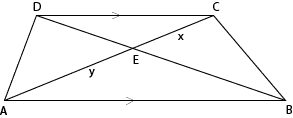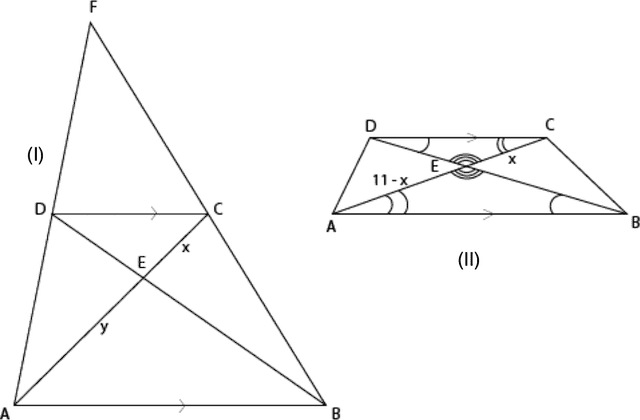Let ABCD be a trapezoid with the length of base AB twice that of base DC, and let E be the point of intersection of the diagonals. If the length of diagonal AC is 11, what is the length of segment EC? The picture below is not to scale.
- 11/3
- 15/4
- 4
- 7/2
- 3

Solution
Referring to the figure, part (I), we know AC = 11; we want EC which we call . Extend AD and BC to meet at F, forming \triangle AFB. Because \triangle FDC \triangle FAB and AB = 2DC, we know FA = 2FD and FD = DA. Also FC = CB. Thus AC and BD are medians, intersecting each other in the ratio 2:1. So
The answer is (a).
Alternatively, consider triangles \triangle ABE and \triangle CDE as in the figure, part (II). Since CD and AB are parallel, ABE CDE, and EAB ECD. Lines AC and BD intersect at point E, so DEC BEA. Since the angles of the two triangles are the same measure, we can say \triangle ABE \triangle CDE, which means that = AB/CD. We note that and AB = 2CD, so that AB/CD = 2 to rewrite the equation as . Solving for , we get, again, that .
The answer, once again, is (a).
